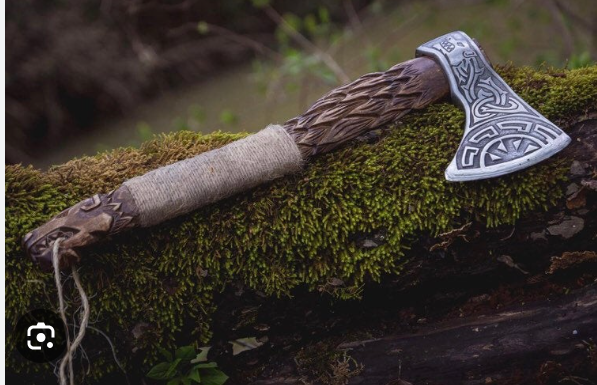Viking markets, often referred to as "ting" or "thing," were vibrant hubs of commerce, culture, and community in the Norse world. These gatherings were not only places for trading goods but also for socializing, settling disputes, and sharing stories. At the heart of these bustling markets were essential tools of trade, none more iconic than the Viking axe. Let's delve into the rich tapestry of Viking markets, where the clang of axes and the exchange of goods echoed through the Norse landscape.
The Significance of Viking Markets: Viking market served as vital economic centers where goods from near and far exchanged hands. Traders traveled great distances, navigating rivers, seas, and overland routes to converge at these gatherings. The markets were not merely commercial ventures; they were also cultural events where people from diverse backgrounds met, fostering connections and exchanges that transcended borders.
Viking Axes: Tools of Trade and Symbolism: Central to the commerce of Viking markets were the axes, essential tools for both daily life and warfare in Norse society. These axes came in various forms, from the utilitarian broadaxes used for woodworking to the fearsome battle axes wielded by warriors. Craftsmen showcased their skills by displaying intricately carved axe heads, often adorned with runes or symbolic motifs, reflecting the craftsmanship and spiritual beliefs of the Viking age.
Trading Axes: Bartering and Bargaining: While axes were indispensable tools for many Vikings, they were also highly sought-after trade goods. Iron, a key component in axe production, was not always readily available in certain regions, making finely crafted axes valuable commodities for trade. At Viking markets, skilled blacksmiths displayed their wares alongside other goods such as furs, textiles, jewelry, and foodstuffs, engaging in lively bartering and bargaining to secure the best deals.
Rituals and Festivities: Viking markets were not solely about commerce; they were also occasions for celebration and ceremony. Festivals were held in conjunction with the markets, featuring feasting, music, storytelling, and various contests of skill and strength, including axe-throwing competitions. These gatherings provided opportunities for bonding and camaraderie among the participants, reinforcing social ties and community cohesion.
Legacy and Modern Interpretations: While the traditional Viking markets of old have long since vanished, their legacy endures in modern-day reenactments and cultural festivals. Across Scandinavia and beyond, enthusiasts gather to recreate the ambiance of these ancient gatherings, complete with artisans, traders, and, of course, the iconic Viking axes. These events offer a glimpse into the past, allowing participants and visitors alike to immerse themselves in the sights, sounds, and sensations of Viking-age commerce and camaraderie.
Viking markets were dynamic centers of trade and culture, where the clang of axes and the bustle of commerce mingled with the laughter of revelers and the solemnity of rituals. These gatherings were more than just venues for economic exchange; they were crucibles of community, where bonds were forged, stories were shared, and traditions were upheld. And amidst it all, the Viking axe stood as both a tool of trade and a symbol of the enduring spirit of the Norse people. Viking store


